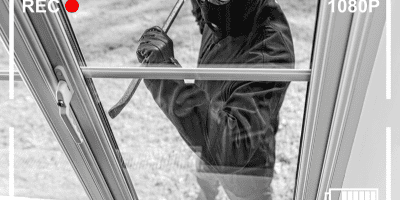In an ever-changing world, where safety and security have become paramount concerns, the architectural landscape has undergone a fascinating transformation. From humble abodes to impenetrable fortresses, the evolution of architectural design has seen an unprecedented focus on maximum security. This article explores the intriguing journey from home to fortress, highlighting the innovative solutions and features that have emerged to ensure our safety and peace of mind.
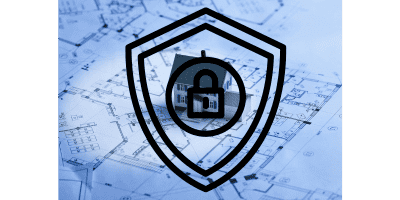
The Importance of Home Security
Understanding the Need for Maximum Security
When it comes to the safety and security of your home, there is no compromise. Protecting your loved ones and your valuables should be your top priority. Understanding the need for maximum security is vital in today’s world, where home invasions and burglaries are on the rise. By implementing effective security measures, you can create a safe and secure environment for you and your family to live in.
The Rising Concern of Home Invasions
Home invasions have become a growing concern in recent years. Of the more than 850,000 violent crimes committed in the U.S. in 2021, about 49% of these took place the home, according to the FBI database. With the advancements in technology, criminals have become more sophisticated, making it even more important to stay one step ahead. Having a comprehensive home security system in place can significantly reduce the risk of home invasions and provide peace of mind.
Protecting Valuables and Loved Ones
Your home is not just a place to live, but also a sanctuary for you and your loved ones. It is where you create memories, feel safe, and keep your most precious belongings. Protecting your valuables and loved ones is of utmost importance. By investing in home security measures, you can deter potential intruders and ensure the safety of your family and possessions. The peace of mind that comes with knowing you have taken every possible precaution is invaluable.
Historical Approaches to Home Security
Ancient Fortifications and Defensive Tactics
Throughout history, humans have always sought ways to protect their homes and loved ones. Ancient civilizations constructed fortifications and employed various defensive tactics to ensure their safety. From moats and drawbridges to fortified walls and towers, these measures were aimed at deterring and repelling potential threats. The ingenuity and resourcefulness displayed by our ancestors in creating these fortifications are a testament to their determination to safeguard their homes.
Medieval Castles and the Birth of Defensive Architecture
The medieval period witnessed the emergence of the castle, which revolutionized the concept of home security. These imposing structures were designed with multiple layers of defense, including thick stone walls, strategically placed towers, and intricate systems of gates and bridges. The emphasis on defense inspired the birth of defensive architecture. It was during this era that concepts like murder holes, arrow slits, and even secret passageways were introduced to further strengthen the security of the castle.

Modern Alarms and Surveillance Systems
With the advent of technology, home security has evolved substantially. Modern homes are equipped with advanced alarm and surveillance systems that offer unparalleled protection. These systems can detect unauthorized entry, trigger alarms, and even notify authorities immediately. With the introduction of innovative features such as motion sensors, night vision cameras, and live video monitoring, homeowners now have the ability to keep a watchful eye on their property, even from a remote location.
Modern Trends in Home Security
Integrated Smart Home Security Solutions
As technology continues to advance, smart home security solutions have become increasingly popular. Integrated systems offer a seamless and interconnected network of devices that work together to ensure maximum security. From smart door locks and window sensors to security cameras and motion detectors, these systems provide homeowners with complete control and real-time monitoring. The ability to remotely manage and monitor your home security system through your smartphone or other devices adds an extra layer of convenience and peace of mind.
Automated Locking and Access Controls
Keyless entry systems have become a prominent feature of modern home security. Automated locking systems use electronic keypads, fingerprint scanners, or even facial recognition technology to grant access to authorized individuals. This eliminates the need for traditional keys and provides enhanced security against unauthorized entry. With programmable access codes and the ability to track and monitor who enters and exits your home, you can have full control over who has access to your property.
Advanced Biometric Authentication Systems
Biometric authentication systems have gained significant traction in recent years. These systems utilize unique physical or behavioral characteristics, such as fingerprints, iris patterns, or voice recognition, to verify the identity of individuals. By incorporating biometric authentication, homeowners can ensure that only authorized individuals can access their homes. The accuracy and reliability of these systems make them an effective deterrent against intruders.
Architectural Innovations for Maximum Security
Reinforced Doors and Windows
One of the first lines of defense in home security is having reinforced doors and windows. Traditional wooden doors and windows can be easily breached, providing little resistance to potential intruders. However, by investing in reinforced materials such as solid wood, metal, or fiberglass, you can significantly increase the security of your home. Reinforced doors often feature multiple locking points, deadbolts, and reinforced frames, making them much more difficult to break through.
Impact-Resistant Materials for Walls and Roofs
In addition to securing entry points, the use of impact-resistant materials for walls and roofs can provide an extra layer of defense. High-strength materials like reinforced concrete and impact-resistant glass can withstand significant force and prevent unauthorized access. These materials are designed to absorb and distribute impact energy, making it extremely difficult for intruders to breach your home’s security.
Bulletproof Glass and Security Film
For those seeking the ultimate level of protection, bulletproof glass and security film provide unparalleled security against forced entry and ballistic threats. Bulletproof glass is a composite material that consists of multiple layers of glass and plastic, capable of withstanding gunfire and extreme force. Alternatively, security film can be applied to existing glass surfaces to reinforce them. This film is designed to hold shattered glass together, preventing easy access and increasing the difficulty for intruders.
Panic Rooms
For situations where immediate protection is necessary, panic rooms provide a secure retreat within your own home. These specially designed rooms are equipped with reinforced walls, fortified doors, and communication systems to ensure your safety during a home invasion or other emergencies. Panic rooms are typically hidden and can be stocked with essential supplies, allowing you to wait for help or escape if necessary. Having a panic room gives you an added layer of protection from home invasions, as well as weather events such as tornados, and peace of mind.
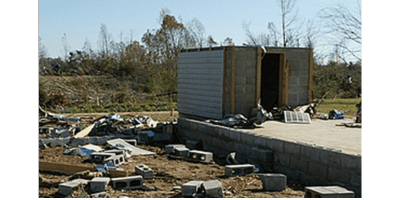
Surveillance and Monitoring Systems
Closed-Circuit Television (CCTV) Systems
Closed-circuit television (CCTV) systems have become a staple in home security. These systems use strategically placed cameras to monitor and record activities in and around your property. The footage captured by the cameras can be reviewed in real-time or later, aiding in identifying potential threats and providing evidence in the event of a security breach. The mere presence of visible cameras can act as a deterrent, making burglars think twice before targeting your home.
Motion Sensors and Intruder Detection
Motion sensors play a crucial role in detecting potential intruders. These sensors are designed to detect movement within a defined area and trigger an alarm or notification when unauthorized motion is detected. By strategically placing motion sensors around your home, you can create an invisible barrier that alerts you to any potential threats. This early warning system gives you the opportunity to react swiftly and ensure your safety.
Remote Monitoring and Control
Advancements in technology have made it possible to remotely monitor and control your home security system. With the help of mobile applications and internet connectivity, you can access live feeds from your security cameras, arm or disarm your alarm system, and receive notifications about any activity in and around your home. This real-time monitoring and control allow you to stay connected and maintain the security of your home no matter where you are.
Artificial Intelligence in Security Systems
Artificial intelligence (AI) has revolutionized the field of home security. AI-powered security systems can analyze data from various sensors and cameras to detect patterns and anomalies, enhancing the accuracy and efficiency of threat detection. These systems can differentiate between normal and suspicious activities, minimizing false alarms and providing more reliable security. By harnessing the power of AI, homeowners can enjoy a higher level of security and protection.
Advanced Access Control Mechanisms
Biometric Identification Techniques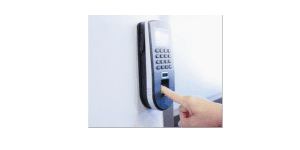
Biometric identification techniques, such as fingerprint scanners and facial recognition systems, have become increasingly sophisticated and reliable. These techniques provide a highly secure and convenient way to grant access to authorized individuals. By associating unique physiological or behavioral characteristics with user profiles, biometric authentication eliminates the risk of unauthorized access. Whether it’s scanning your fingerprint or having your face recognized, these techniques ensure that only you and trusted individuals can enter your home.
Proximity Cards and Key Fobs
Proximity cards and key fobs offer a convenient alternative to traditional keys. These small devices contain encrypted information that is read by a reader located near the entry point. When the card or fob is in close proximity to the reader, the door or gate can be automatically unlocked. This technology allows for quick and easy access while maintaining a high level of security. Additionally, lost or stolen cards can be easily deactivated, preventing unauthorized access.
Voice Recognition and Facial Recognition Systems
Voice recognition and facial recognition systems are gaining popularity in modern access control mechanisms. These technologies rely on the unique characteristics of an individual’s voice or facial features for identification. By speaking a passphrase or having their face scanned, authorized users can gain access to their homes. These systems provide an added layer of security and convenience, as they eliminate the need for physical keys or cards.
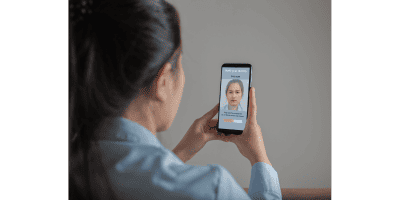
Exterior Security Measures
Perimeter Fencing and Walls
Establishing a secure perimeter has large potential in deterring potential intruders. Perimeter fencing and walls can act as the first line of defense. Solid walls or fences made from durable materials like brick, concrete, or metal can create a physical barrier around your property. By erecting sturdy fencing and walls, you help limit access to your home, making it less vulnerable to intrusion. We urge careful consideration of all the aspects of these features specific to your own unique situation, as sometimes these features can also hinder you home security goals.
Security Gates and Barriers
Security gates and barriers can further enhance the security of your property. These can be integrated into your perimeter fencing and walls or installed as standalone features. Security gates can be automated and controlled remotely, allowing you to grant access to authorized individuals. Barriers, such as bollards or retractable posts, provide additional protection against vehicles attempting to breach your property.
Security Lighting
Illuminating the exterior of your home is a crucial aspect of home security. Well-placed security lighting acts as a deterrent by making your property less appealing to potential burglars. Motion-activated lights are especially effective, as they surprise and draw attention to any suspicious activity. By ensuring that the perimeter and entrances of your home are well-lit, you create an environment that is less inviting to intruders.
CCTV Surveillance of Exterior Areas
Extending your CCTV system to cover the exterior areas of your property is essential for comprehensive monitoring and security. By placing cameras strategically around your home’s exterior, you can capture any suspicious activity or potential threats. This provides additional evidence in case of security incidents and aids in identifying intruders. The visibility of these cameras also acts as a deterrent, alerting potential intruders to the fact that they are being watched and recorded.
Defending Against Cyber Threats
IoT Security and Vulnerabilities
As homes become increasingly connected through the Internet of Things (IoT), the risk of cyber threats also grows. IoT devices, such as smart cameras, door locks, and thermostats, can potentially be exploited by hackers. It is crucial to secure your home network and IoT devices by regularly updating firmware, using strong passwords, and implementing reliable security measures. By staying vigilant and informed about potential vulnerabilities, you can protect your home from cyber threats.
Wireless Network Protection
Securing your wireless network is paramount in safeguarding your home’s digital infrastructure. Strong encryption protocols, such as WPA3, should be used to protect your Wi-Fi network from unauthorized access. Regularly changing network passwords and disabling remote access to your router are additional steps you can take to enhance network security. By securing your wireless network, you prevent unauthorized individuals from gaining access to your smart home devices and personal information.
Firewalls and Intrusion Detection Systems
Installing a robust firewall and intrusion detection system can provide an extra layer of defense against cyber threats. Firewalls act as a barrier between your home network and the internet, monitoring incoming and outgoing traffic for any suspicious activity. Intrusion detection systems analyze network traffic and patterns, alerting you to potential security breaches. By implementing these security measures, you can prevent unauthorized access to your home network and mitigate the risk of cyber attacks.
Securing Smart Home Devices
Smart home devices offer numerous conveniences, but they can also be a potential security risk if not properly secured. It is essential to change default passwords, keep software up to date, and disable unnecessary features or services on these devices. Additionally, segregating your smart home devices on a separate network from your computers and smartphones can provide an extra layer of security. By taking proactive steps to secure your smart devices, you can minimize the risk of unauthorized access and protect your personal information.
Creating a Safe Interior Environment
Reinforcing Safes and Vaults
Safes and vaults are commonly used to secure valuable possessions within a home. To maximize their effectiveness, reinforced safes and vaults should be considered. These safes feature solid construction, multiple locking mechanisms, and resistance to drilling, cutting, and torch attacks. Reinforcing safes and vaults ensures that your most valuable items are adequately protected against theft or burglary.
Security Alarm Systems
Security alarm systems are a fundamental component of home security. These systems utilize sensors placed throughout your home to detect unauthorized entry or movement. When triggered, the alarm system will sound a loud siren, alerting you and potentially scaring off intruders. Additionally, alarm systems can be monitored by a security company, which can quickly dispatch authorities in the event of a security breach. By investing in a reliable security alarm system, you can effectively deter intruders and protect your home.
Emergency Communication Systems
In the event of an emergency, having a reliable communication system is crucial. Emergency communication systems allow you to quickly and effectively communicate with emergency services or your security provider. These systems often include panic buttons or wearable devices that can trigger an immediate response. By having an efficient emergency communication system in place, you can ensure that help is just a button press away.
The Future of Home Security
Advancements in Artificial Intelligence
Artificial intelligence continues to advance rapidly, and its potential for home security is immense. AI-powered security systems have the ability to learn and adapt, making them more efficient in detecting and preventing security breaches. These systems can analyze vast amounts of data from various sources to identify patterns and anomalies, improving threat detection accuracy and reducing false alarms. As AI technology continues to evolve, homeowners can expect increasingly sophisticated and intelligent security solutions.
Predictive Analytics and Risk Assessment
Predictive analytics and risk assessment play a critical role in the future of home security. By analyzing historical data and current trends, predictive analytics can anticipate potential threats and vulnerabilities. Risk assessment tools enable homeowners to evaluate their security measures and identify areas that need improvement. By leveraging these technologies, homeowners can proactively strengthen their home security and stay one step ahead of potential risks.
Biometric Enhancements
Biometric technology is expected to continue advancing, offering enhanced security and convenience. Fingerprint and facial recognition systems are likely to become more refined and accurate, making them even more reliable for access control. Additionally, advancements in biometric enhancements may include technologies like palm vein recognition, gait recognition, or even DNA authentication. These developments will further enhance the security of homes and ensure that only authorized individuals have access.
Robotic Security Systems
The integration of robotics into home security systems is an exciting development on the horizon. Robotic security systems can patrol and monitor your property, offering an additional layer of protection. Equipped with cameras, sensors, and AI capabilities, these robots can detect and deter potential intruders, as well as provide real-time video feeds and alerts to homeowners. Although still in the early stages of development, robotic security systems have the potential to revolutionize home security in the near future. Pause, deep breath, the Power Pros debate this subject amongst themselves, regularly.
In conclusion, home security is a vital aspect of homeownership, ensuring the safety and well-being of your loved ones and protecting your valuable possessions. Understanding the need for maximum security is paramount in today’s world, where threats and risks are constantly evolving. By implementing a combination of architectural innovations, surveillance systems, access control mechanisms, and advanced technology, you can create a safe and secure environment for you and your family. With ongoing advancements in home security, the future looks promising, promising a greater level of protection and peace of mind for homeowners worldwide.
